Thu 30 Nov 2017
Scattered thoughts about wildlife and blue eyes
Posted by DavidMitchell under West Marin nature, Wildlife
1 Comment
Indoors we may be celebrating the holiday season sitting around the fire with a glass of egg nog, but outdoors it’s still “nature red in tooth and claw,” as the poet Alfred Lord Tennyson described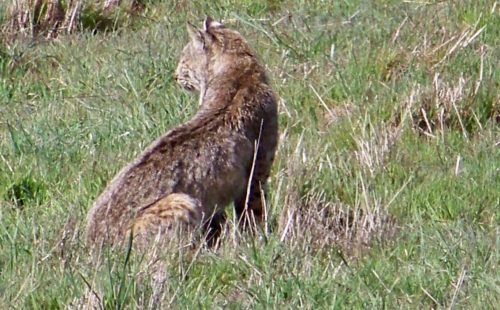 it.
it.
A bobcat has repeatedly shown up around Mitchell cabin this fall, and Tuesday at Toby’s Coffee Bar, I chatted about it briefly with neighbor Carol Horick. Carol told me the bobcat had eaten one of her chickens the night before. It was an old and tottering chicken she’d owned a long time, so the financial loss was small. Nonetheless, the incident had put her on alert, and she was on her way to Building Supply Center to buy some metal mesh to further safeguard her remaining chickens.
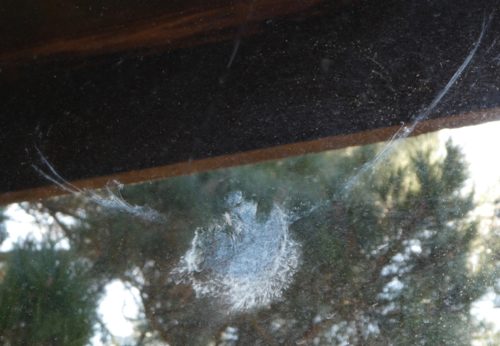
The moment of impact
An unrelated avian mishap occurred Monday morning before breakfast at Mitchell cabin, but Lynn and I don’t know if the bird survived. A dove taking off from our deck flew under the eaves and slammed into a living-room window.
The crash was loud, and the dove left an image of how it looked at the moment of impact. It managed to fly off, but it might very well have suffered major injuries.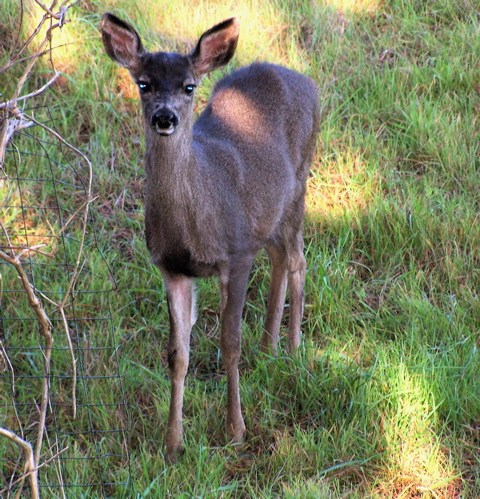
Old blue eyes. Flash photography often gives humans red eyes. Blacktail deer come out with blue eyes while raccoon eyes can end up white or green or both. Possums get pink eyes. Elsewhere in the United States, flashes turn prairie dog eyes orange and alligator eyes red.
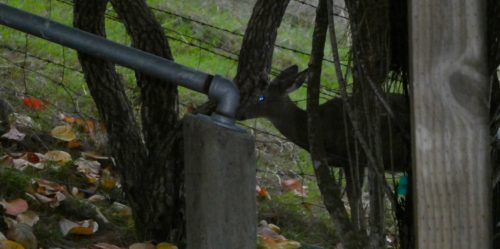
Blacktail doe at sunset a week ago, eating persimmon leaves. Flash photo by Lynn Axelrod
As SparselySageAndTimely.com originally explained 10 years ago, the reason flashes, which are often vital for photographing nocturnal wildlife, give these animals’ eyes their various colors is not the same reason flashes can make human eyes look red.
Among mammals, the iris of the eye expands and contracts to let in the optimum amount of light as conditions become darker or brighter. When a camera flashes, the human iris cannot contract fast enough to keep bright light from reaching the back of the eye; as a result, red blood vessels of the retina reflect light and show up in photos as ‘red eye.’
Unlike humans, many other mammals, especially nocturnal creatures, have a mirror-like surface, the tapetum lucidum, behind their retinas. The eyeshine of a deer caught in the headlights is a reflection off the tapetum lucidum.
The tapetum lucidum helps nocturnal animals hunt and forage in low light. Here’s how. Light from outside the eye passes through the iris and the retina and then bounces off the tapetum lucidum back through the retina. This magnifies the intensity of the light reaching the rods and cones of the retina, which are what sense light.
However, the color of the tapetum lucidum differs from species to species, which is why rabbits have orange or red eyeshine while dogs are often green or blue. Nor is having a tapetum lucidum an unmixed blessing. As Wikipedia notes, the tapetum lucidum “improves vision in low light conditions but can cause the perceived image to be blurry from the interference of the reflected light.”
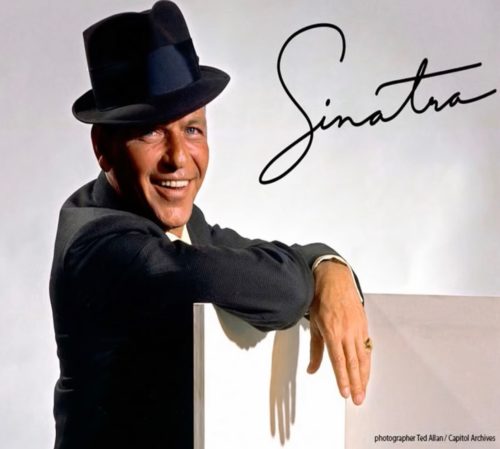
So the next time you see some ‘old blue eyes’ in nature photos shot with a flash in low light, please remember that they were never unique to old Frank.

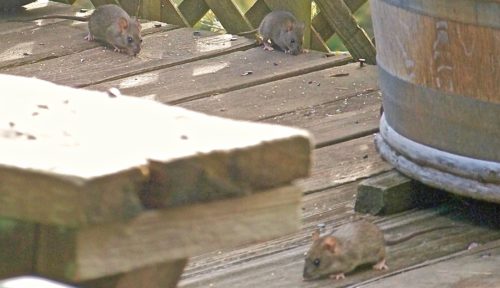











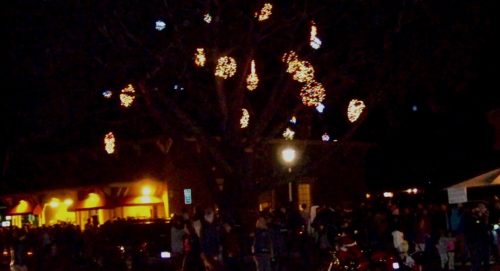



 As of Wednesday, the “stump” of the former town Christmas tree had been lightly decorated with prayer flags. Until the stump is removed, other decorations can be expected, one of the Wells Fargo staff told me.
As of Wednesday, the “stump” of the former town Christmas tree had been lightly decorated with prayer flags. Until the stump is removed, other decorations can be expected, one of the Wells Fargo staff told me.